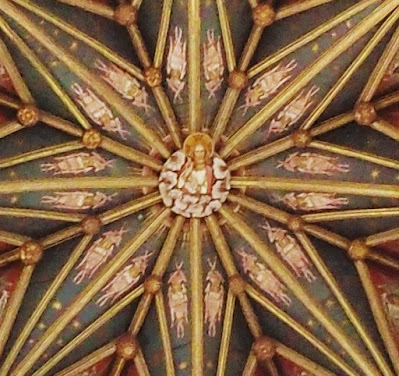Seven hundred years ago today, at half-past four on the morning of the 13th February 1322, the monks of Ely were creeping back to bed having just said Lauds, when a terrifying explosion of sound burst from the cathedral next door. An earthquake, was their first thought, and, given what they found when they ran into the nave, there might as well have been one. The Norman crossing tower had collapsed; rubble choked the floor; the church lay open to the sky.
The disaster had not been altogether without warning. Cracks in the tower’s masonry had developed not long after work had begun on the new Lady Chapel just to the north, so the monks were already taking the precaution of avoiding the cathedral sanctuary. This was one reason why nobody was killed in the collapse. Even so, the sacristan, Alan of Walsingham, was in understandable despair at the scene, ‘not knowing which way to turn nor what to do.’ [1] He had only been in office for three months, and he must have suspected that the Lady Chapel works, which he himself had put in hand, had hastened the catastrophe. Never mind that he had already presided over Ely’s other recent misfortunes; in 1314 it had been Alan who had opened the shrine of St. Alban, the first English martyr-saint, in order for Edward II himself to declare the relics’ veracity, only for the King to declare that the true relics were not these, as Ely had claimed since 1045, but those in the possession of the abbey at St. Albans. Now not only was Ely’s reputation in tatters, but the very fabric of its building lay in ruins.
Yet Alan of Walsingham turned out to be exactly the right man for his job, for it was he who, once he had recovered himself, devised and oversaw the replacement of the crossing tower — which was not merely a replacement, but its far surpassing. Already considered ‘remarkable for his skill in goldsmith’s work’, he was about to prove an acute knowledge of and instinct for the science and art of architecture. Within six months he had had cleared not only the rubble of the old tower but the four columns that had supported its corners, widening the crossing into a huge octagonal space. Over this he placed a structure so audacious that the cathedral might have been built to incorporate it, rather than the other way around: the famous and quite unique octagon lantern tower. With the help of the master carpenter William Hurley, Master of the King’s works south of the river Trent, Alan’s brainchild was translated into reality. By their extraordinary imagination and the magnificent workmanship they oversaw, four hundred and fifty tons of lead and timber were made to soar weightlessly into heaven, where they have remained ever since, letting nearly seven centuries of photons flood down into the nave.
 |
| Detail of picture above: John of Burwell’s carving of Christ in Majesty, in the place it has occupied since 1340. |
It is remarkable that we know all these names; in tales of cathedral-building, most of the heroes are anonymous. Yet at Ely we even know who carved the the central roof-boss at the octagon’s culmination, the figure of Christ in Majesty on which all its lines converge. The craftsman was John of Burwell, a local man from a village south-east of Ely, and his carving was lowered into position in 1340. Only eighteen years after disaster befell his city, he made good its crowning triumph joining the ranks of the men had brought this architectural masterpiece to completion, a perfect marriage of art, engineering and devotion that remains the jewel of Ely to this day.




An interesting story, even for someone like me who finds cathedrals a bit too overpowering!
ReplyDeleteThank you! Certainly Ely is no place to visit if you don't want to be overwhelmed by Gothic splendour...
Delete